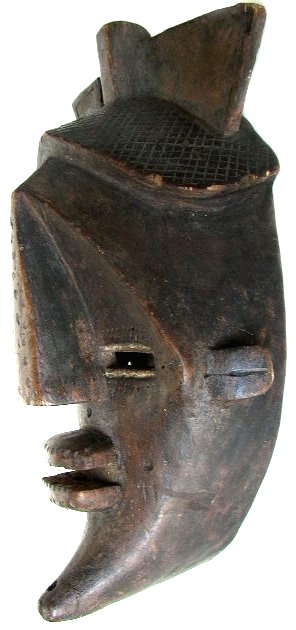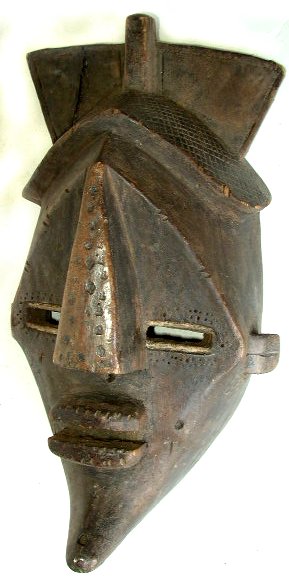
 Lwalwa
(Balualua, Balwalwa, Lwalu), Democratic Republic of the Congo and Angola
Lwalwa
(Balualua, Balwalwa, Lwalu), Democratic Republic of the Congo and Angola 
 Lwalwa
(Balualua, Balwalwa, Lwalu), Democratic Republic of the Congo and Angola
Lwalwa
(Balualua, Balwalwa, Lwalu), Democratic Republic of the Congo and Angola
Ceremonial
bangongo mask.
The land where 20,000 Lwalwa live is rich and fertile, lending itself well to the
agricultural economy. Their social and political
organization is rudimentary. Each Lwalwa
village is headed by a male or female chief, whose power is held in check by a powerful
society, the bangongo. Lwalwa art,
known mostly by its masks, is the most original in a group of tribes inhabiting the
region. Sculpting is recognized as a prestigious profession and is usually passed
on from father to son. Sculptors are a privileged caste of the community—a successful
sculptor can accumulate wealth, become a chief and has the right to organize dances. Women
and children are not allowed to view ceremonies in which the masks are used. The masks had
an important function in the bangongo dance of the hunting ritual. When hunters returned empty-handed, the ancestors would
be appeased by organizing a dance. The
masks were also used in a secret ritual of the bangongo society, in charge
of initiation and circumcision of young men. The Lwalwa are renowned dancers. The
choreography of masked dances was highly complex and had to appease the spirits of the
ancestors and compel them to intervene. Masks still play a role today in secular
festivities.
Material: wood
Size: H. 15”, W. 8”, D.
5½”